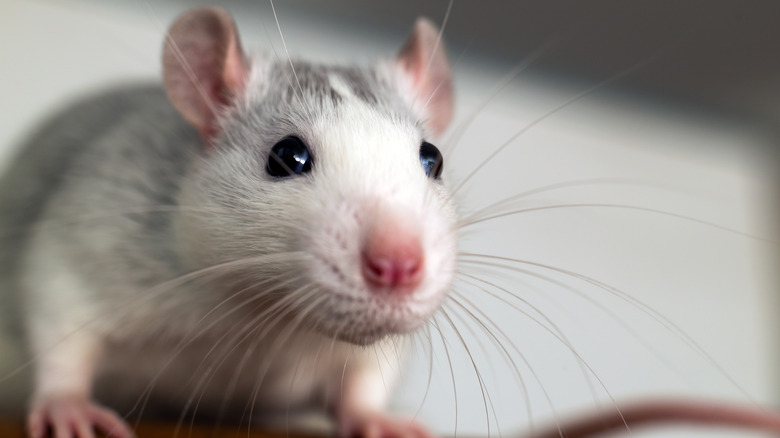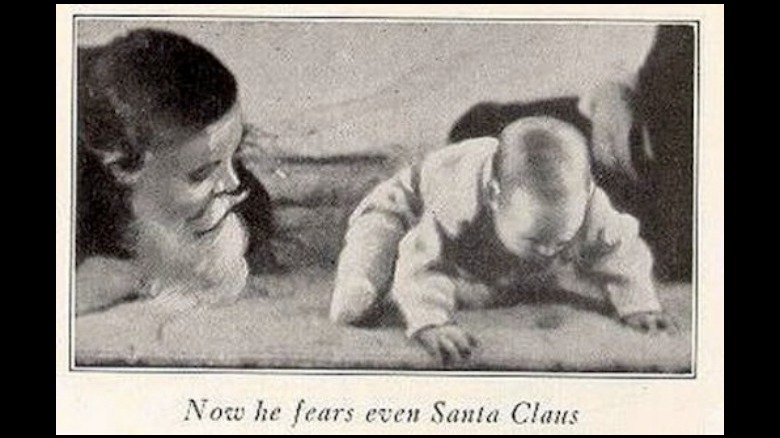The Sad Truth Of The Little Albert Experiment
In 1920, Johns Hopkins psychologist John B. Watson devised an experiment to determine whether an infant could be conditioned to fear something they were not previously afraid of.
As reported by Simply Psychology, Watson would introduce an infant to a variety of animals. If the infant did not display fear of the animals, the doctor would introduce a "loud, fear-arousing sound" while the infant was interacting with one of the animals — in an attempt to condition the infant to fear the animal. Watson also wanted to determine whether the fear would transfer to other animals or objects that resembled the animal, and how long the conditioned fear would persist.
The subject of Watson's experiment was a 9-month-old infant, who was identified only as Albert B. In the beginning stages of the Little Albert experiment, Watson and his graduate student, Rosalie Rayner, introduced the infant to a monkey, a rabbit, a white rat, and a variety of masks. Simply Psychology reports the infant did not display any signs of fear while interacting with the animals or the masks. However, he did have a fearful response to a loud noise, which was made by striking a metal pipe with a hammer.
Two months later, Little Albert was brought back to the university for the second phase of the experiment, in which the infant was reintroduced to a white rat. Although he did not fear the rat, he continued displaying signs of fear, including crying, when hearing the loud noise.
The controversy surrounding the Little Albert experiment
During the second session, Watson and Rayner began introducing the frightening sound while Little Albert was interacting with the rat, in an effort to associate the noise with the rat. As reported by Simply Psychology, the scenario was repeated a total of seven times. After the seventh interaction, Little Albert displayed signs of fear when introduced to the rat with or without the frightening noise. In addition to crying, the infant attempted to crawl away from the rat to escape.
In a series of further experiments, Watson and Rayner determined Little Albert also developed a fear of other animals and inanimate objects that had similar characteristics to the rat. In addition to the family dog, the infant displayed signs of fear when shown a fur coat and a Santa Claus mask.
Simply Psychology reports, his fear of the rat seemed to wane after 10 days. However, it did not dissipate completely. Little Albert's mother withdrew him from the experiment and refused Watson and Rayner's proposal to eliminate the infant's fears.
Although the Little Albert experiment proved fear can be conditioned in humans, Watson and Rayner faced harsh criticism for causing an infant to fear of numerous animals and objects, which he did not fear before the experiment was conducted. Despite the fact that Little Albert was withdrawn from the experiment by his mother, Watson and Rayner also faced criticism for failing to reverse the infant's fear before the study's conclusion.
Whatever happened to Little Albert
There are many rumors surrounding the true identity of Little Albert, but his real name was eventually revealed to be Douglas Merritte. As reported by the American Psychological Association, Douglas was the son of Arvilla Merritte, who was a wet nurse at a pediatric hospital called the Harriet Lane Home. According to reports, Merritte only received $1 for her son's participation in the experiment.
Researchers identified Little Albert by comparing known biographical information about the infant's mother and photos of both children. Although they were unable to determine whether Douglas Merritte ever overcame his fears, they were able to verify he died at the age of six. As reported by New Scientist, Merritte had a number of "severe neurological problems" and eventually died of hydrocephalus — which is a buildup of fluid on the brain.
The infant's neurological conditions raised even more questions about the experiment, as John B. Watson claimed the subject was otherwise in good health.


